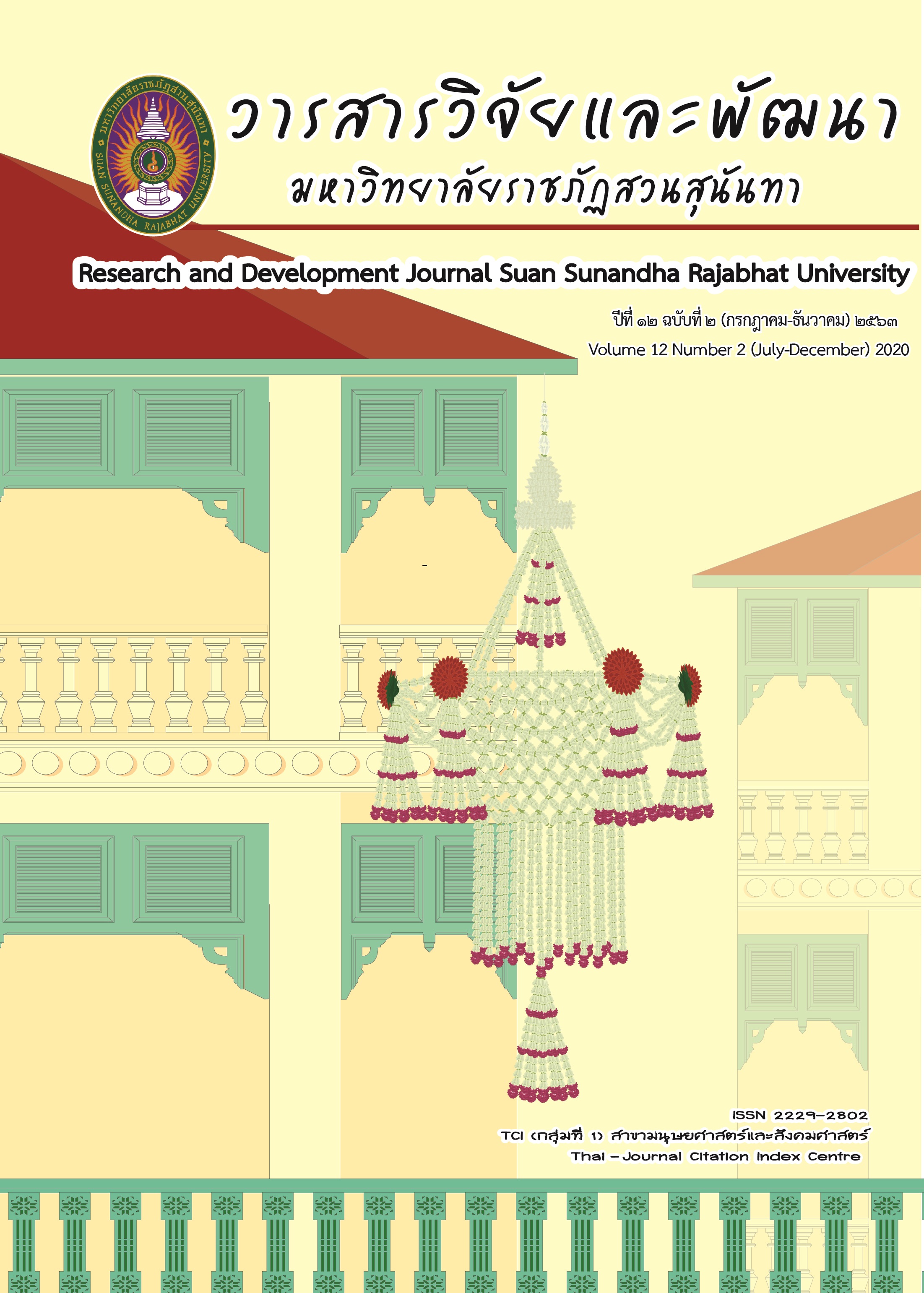กลยุทธ์การพัฒนาทรัพยากรมนุษย์ ของสำนักงานตำรวจแห่งชาติ
DOI:
https://doi.org/10.53848/irdssru.v12i2.243679คำสำคัญ:
สำนักงานตำรวจแห่งชาติ, การพัฒนาทรัพยากรมนุษย์, กลยุทธ์บทคัดย่อ
การวิจัยศึกษาสภาพความเป็นจริง พร้อมกับสร้างและประเมินกลยุทธ์การพัฒนาทรัพยากรมนุษย์ เป็นการวิจัยเชิงผสมผสานระหว่างการวิจัยเชิงปริมาณและการวิจัยเชิงคุณภาพ แบ่งเป็น 2 ขั้นตอน คือ ศึกษาสภาพ ความจำเป็นในการพัฒนาทรัพยากรมนุษย์ที่ใช้แบบสอบถามจากกลุ่มตัวอย่างข้าราชการตำรวจส่วนกลาง ชั้นสัญญาบัตร 347 คน และ การสร้างและประเมินกลยุทธ์การพัฒนาทรัพยากรมนุษย์ โดยใช้วิธีการสนทนากลุ่มผู้เชี่ยวชาญด้านวิชาการและวิชาชีพ จำนวน 9 ท่าน พบว่า สภาพความจำเป็นในการพัฒนาทรัพยากรมนุษย์อยู่ในระดับที่มากและบุคลากรสำนักงานมีความต้องการให้พัฒนาทรัพยากรมนุษย์ ขณะที่กลยุทธ์การพัฒนา ประกอบด้วย ด้านการฝึกอบรมและพัฒนา ด้านการพัฒนาสายงานอาชีพ และ มีผลการประเมินกลยุทธ์พบว่า มีความเหมาะสม ความเป็นไปได้ ความเป็นประโยชน์และมีความถูกต้องสามารถนำไปใช้ประโยชน์ในราชการสำนักงานตำรวจแห่งชาติได้
เอกสารอ้างอิง
Jintana Boonbongkan and Nattapan Kejornnan. (2005). Strategic Management. Bangkok: Se-Ed Education
Tongchai Santiwong. (2009). Future of Human Resource Management. [Online]. Available: http://www.nidambe11.net/ekonomiz/2005q2/article2005june03p14.htm. [12 January 2019].
Dictionary, Royal Society of Thailand Edition B.E. 2542 (A.D. 1999). (2003). Bangkok: Nanmee Books Publication.
Walawan Suntornsing and Jirat Chuanchom. (2008). Human Resources Department Personnel Characteristics When Viewed by Entrepreneurs: A Case Study of Rajadevi District, Bangkok. [Online]. Available: http://dusithost.dusit.ac.th/~research/menu/abstra/abstract/social/valawan.pdf [8 April 2019].
Rangsan Prasertsri. (2006). Modern Management. Bangkok: Dhammasarn.
Office of the Civil Service Commission. (2007): Human Resource Management Competence Adaptation. Bangkok: Office of the Civil Service Commission.
Somchai Pakapatwiwat. (1999). Strategic Management. (2nd Edition). Bangkok: Amarin.
Sunanta Laohanan. (2003). Human Resource Management. Bangkok: Department of Business and Cooperatives Management, Faculty of Management Sciences, Ban Somdet Chao Phraya Rajabhat University.
Aranya Onrak. (2008). Factors Influencing Human Resource Development of Office of Disease Prevention and Control 12, Songkhla, Department of Disease Control, Ministry of Public Health, Sukhothai Thammathirat University: Nonthaburi.
David, F.R. (2009). Strategic Management: Concept and cases. (12th ed.). New Jersey: Pearson Education.
Delahaye, B.L. (2005). Human Resource Development: Adult learning and knowledge management. (2nd ed.). Sydney: John Wiley & Sons.
Dennis, R. A. (1997). Group Support Systems for the Strategic Planning. [Online]. Available: http://www.jstor.org/discover/10.2307/40398256?uid=3739136&uid=2129&uid=2&uid=70&uid4&sid=55872312833 [2562, January 8].
Dessler, G. (2005). Human Resource Management. (7th ed.). New Jersey: Prentice Hall.
Friso, D. H., Ad V. I. & Christian M. (2010). Does HRM really matter in bringing about strategic change? Comparative action research in ten European steel firms. European Management Journal, 28(1), 14.
Mathis R. L. & Jackson J. H. (2004). Human Resource Management. (10th ed.). Singapore: South Western.
Werner J.M. & Randy L.D. (2009). Human Resource Development. (4th ed.). Singapore: Thomson South-Western.
ดาวน์โหลด
เผยแพร่แล้ว
รูปแบบการอ้างอิง
ฉบับ
ประเภทบทความ
สัญญาอนุญาต
บทความที่ได้รับการตีพิมพ์เป็นลิขสิทธิ์ของ สถาบันวิจัยและพัฒนา มหาวิทยาลัยราชภัฎสวนสุนันทา
ข้อความที่ปรากฏในบทความแต่ละเรื่องในวารสารวิชาการเล่มนี้เป็นความคิดเห็นส่วนตัวของผู้เขียนแต่ละท่านไม่เกี่ยวข้องกับมหาวิทยาลัยราชภัฎสวนสุนันทา และคณาจารย์ท่านอื่นๆในมหาวิทยาลัยฯ แต่อย่างใด ความรับผิดชอบองค์ประกอบทั้งหมดของบทความแต่ละเรื่องเป็นของผู้เขียนแต่ละท่าน หากมีความผิดพลาดใดๆ ผู้เขียนแต่ละท่านจะรับผิดชอบบทความของตนเองแต่ผู้เดียว





